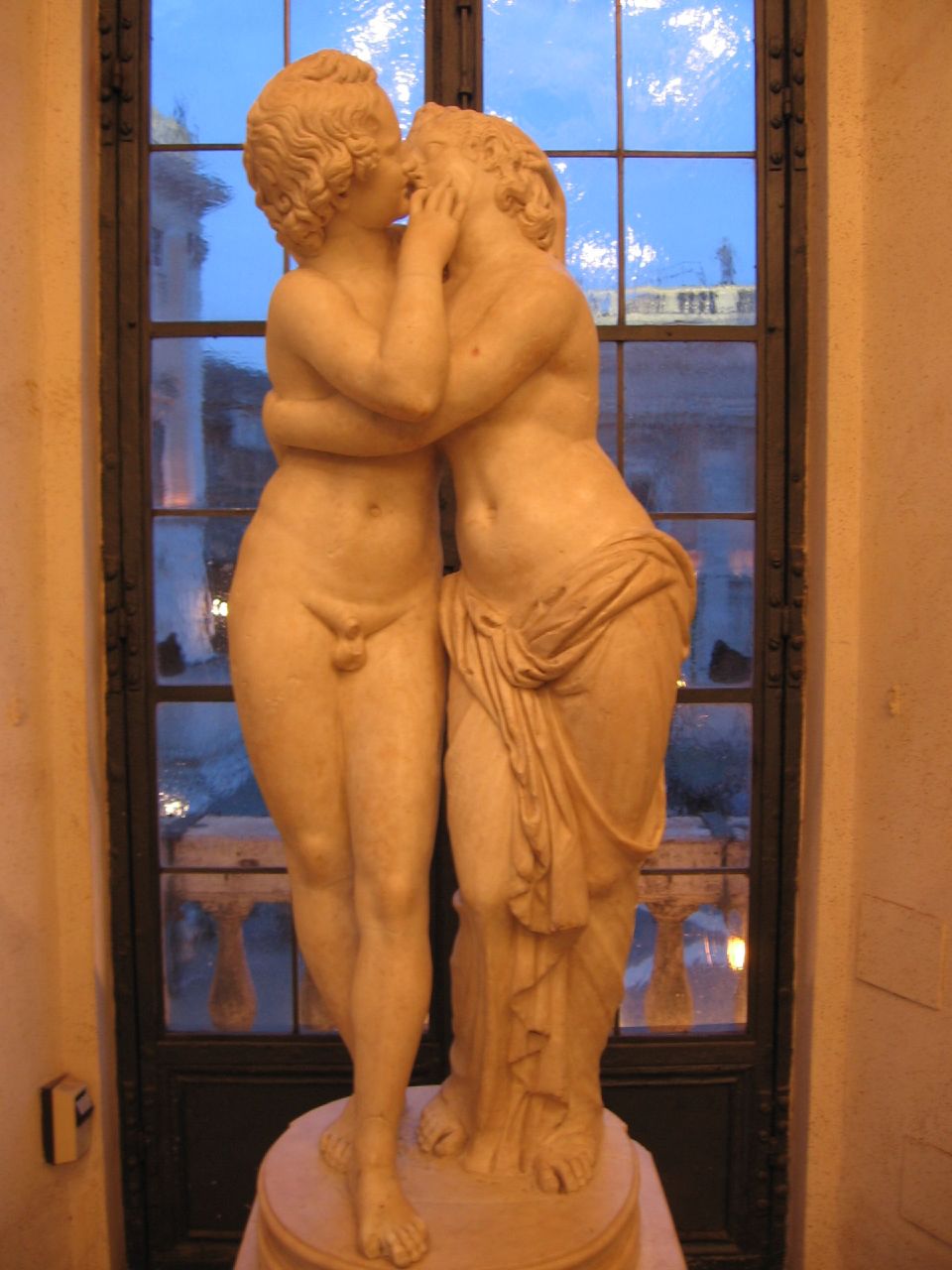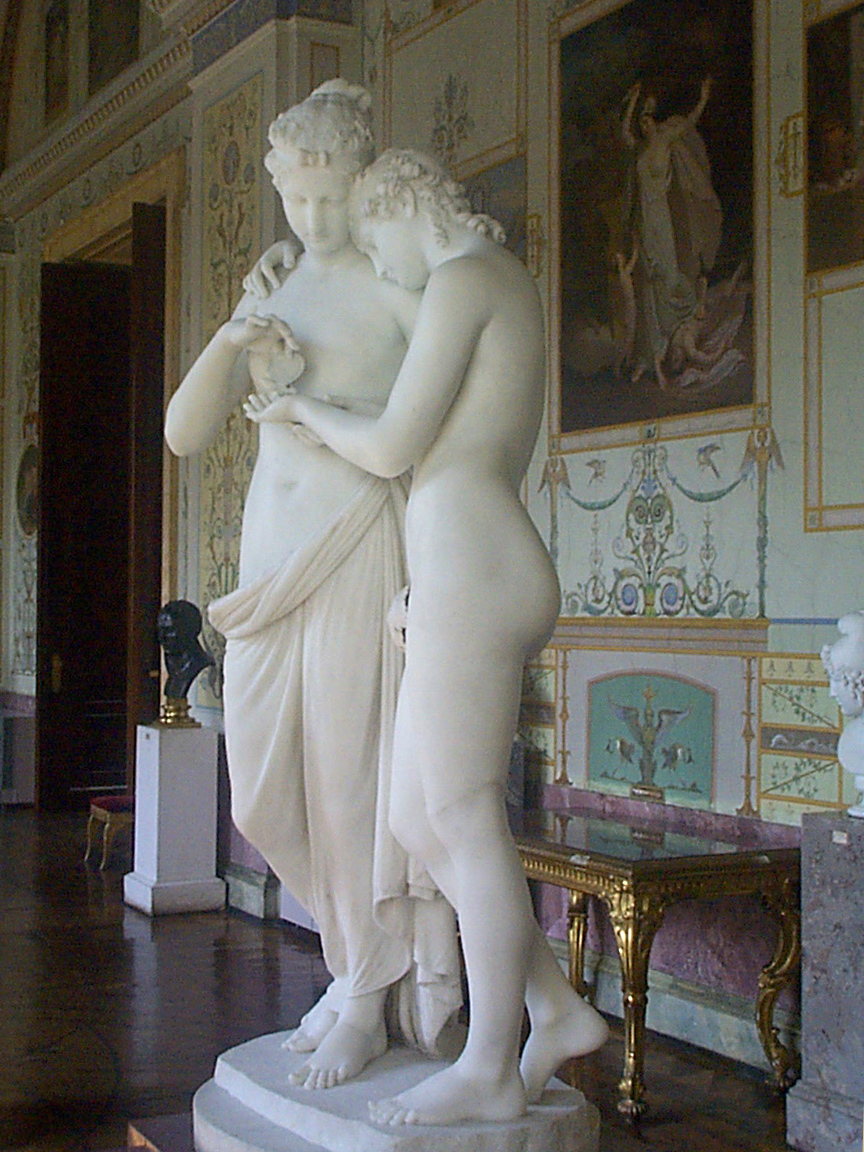Cupid and Psyche (Capitoline Museums) on:
[Wikipedia]
[Google]
[Amazon]
 The marble ''
The marble '' Another version of the ''Cupid and Psyche'' was discovered by conte Giuseppe Fede in his early excavations at
Another version of the ''Cupid and Psyche'' was discovered by conte Giuseppe Fede in his early excavations at
 The marble ''
The marble ''Cupid and Psyche
Cupid and Psyche is a story originally from ''Metamorphoses'' (also called '' The Golden Ass''), written in the 2nd century AD by Lucius Apuleius Madaurensis (or Platonicus). The tale concerns the overcoming of obstacles to the love between P ...
'' conserved in the Capitoline Museums
The Capitoline Museums ( Italian: ''Musei Capitolini'') are a group of art and archaeological museums in Piazza del Campidoglio, on top of the Capitoline Hill in Rome, Italy. The historic seats of the museums are Palazzo dei Conservatori and Pal ...
, Rome
, established_title = Founded
, established_date = 753 BC
, founder = King Romulus (legendary)
, image_map = Map of comune of Rome (metropolitan city of Capital Rome, region Lazio, Italy).svg
, map_caption ...
, is a 1st or 2nd century Roman copy of a late Hellenistic
In Classical antiquity, the Hellenistic period covers the time in Mediterranean history after Classical Greece, between the death of Alexander the Great in 323 BC and the emergence of the Roman Empire, as signified by the Battle of Actium in ...
original. It was given to the nascent Capitoline Museums by Pope Benedict XIV
Pope Benedict XIV ( la, Benedictus XIV; it, Benedetto XIV; 31 March 1675 – 3 May 1758), born Prospero Lorenzo Lambertini, was head of the Catholic Church and ruler of the Papal States from 17 August 1740 to his death in May 1758. Pope Be ...
in 1749, shortly after its discovery. Its graceful balance and sentimental appearance made it a favourite among the neoclassical generations of artists and visitors, and it was copied in many materials from bronze to biscuit porcelain
Biscuit porcelain, bisque porcelain or bisque is unglazed, white porcelain treated as a final product, with a matte appearance and texture to the touch. It has been widely used in European pottery, mainly for sculptural and decorative objects th ...
. Antonio Canova consciously set out to outdo the Antique original with his own ''Cupid and Psyche'' of 1808 (''illustration, below left'')
The sculpture was discovered in the garden of the ''vigna'' of the canonico Panicale on the Aventine Hill in February 1749.
The sculpture quite eclipsed a Roman marble of a winged Cupid and Psyche that had been discovered in the 17th century and removed to the Medici collection in Florence
Florence ( ; it, Firenze ) is a city in Central Italy and the capital city of the Tuscany Regions of Italy, region. It is the most populated city in Tuscany, with 383,083 inhabitants in 2016, and over 1,520,000 in its metropolitan area.Bilan ...
. The Capitoline ''Cupid and Psyche'' was among the cream of the Roman collections sequestered by the French under the terms of the treaty of Tolentino
{{unreferenced, date=June 2018
The Treaty of Tolentino was a peace treaty between Revolutionary France and the Papal States, signed on 19 February 1797 and imposing terms of surrender on the Papal side. The signatories for France were the French Di ...
(1797) and transferred to Paris
Paris () is the Capital city, capital and List of communes in France with over 20,000 inhabitants, most populous city of France, with an estimated population of 2,165,423 residents in 2019 in an area of more than 105 km² (41 sq mi), ma ...
amid grand theatrics. It was returned to Rome after the fall of Napoleon.
Not all viewers were satisfied by its mediocre execution, and Francis Haskell
Francis James Herbert Haskell, (7 April 1928 – 18 January 2000) was an English art historian, whose writings placed emphasis on the social history of art. He wrote one of the first and most influential patronage studies, ''Patrons and Painte ...
and Nicholas Penny
Sir Nicholas Beaver Penny (born 21 December 1949) is a British art historian. From 2008 to 2015 he was director of the National Gallery in London.
Early life
Penny was educated at Shrewsbury School before he studied English at St Catharine ...
noted that Jean-Baptiste de Saint-Victor thought it was a reflection of some earlier, better work, and that, earlier, Joseph-Jerome Le Français de Lalande hoped in print that it might inspire some modern sculptor to come up with a superior work on the same subject. Antonio Canova took up the challenge quite consciously, in his ''Cupid and Psyche'' of 1808.
 Another version of the ''Cupid and Psyche'' was discovered by conte Giuseppe Fede in his early excavations at
Another version of the ''Cupid and Psyche'' was discovered by conte Giuseppe Fede in his early excavations at Hadrian's Villa
Hadrian's Villa ( it, Villa Adriana) is a UNESCO World Heritage Site comprising the ruins and archaeological remains of a large villa complex built c. AD 120 by Roman Emperor Hadrian at Tivoli outside Rome. The site is owned by the Republic of ...
, Tivoli. It has disappeared now, but it was drawn, in its completed and restored condition, by Pompeo Batoni
Pompeo Girolamo Batoni (25 January 1708 – 4 February 1787) was an Italian painter who displayed a solid technical knowledge in his portrait work and in his numerous allegorical and mythological pictures. The high number of foreign visitors tra ...
, who was assembling a "paper museum" of antiquities in 1727–30 for the English antiquary Richard Topham.The Topham Batoni drawing, with the rest of his collection, has passed to the library of Eton College
Eton College () is a public school in Eton, Berkshire, England. It was founded in 1440 by Henry VI under the name ''Kynge's College of Our Ladye of Eton besyde Windesore'',Nevill, p. 3 ff. intended as a sister institution to King's College, ...
; the drawing is illustrated in Haskell and Penny 1981:93, fig. 52 As it was restored, Cupid turns his head away coyly.
Notes
{{coord missing, Italy Antiquities acquired by Napoleon Sculptures in the Capitoline Museums Marble sculptures in Italy Roman copies of 3rd-century BC Greek sculptures Tourist attractions in Rome Archaeological discoveries in Italy Sculptures of Cupid Cupid and Psyche